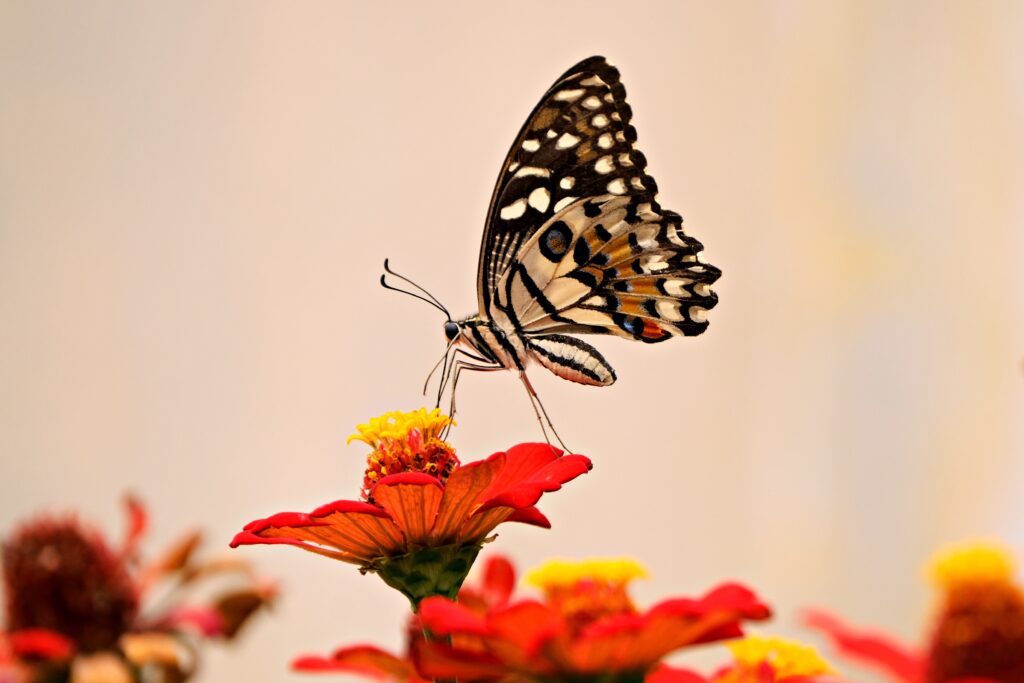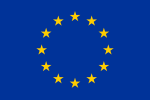by Thomas Marcou
Among the 15 Early Stage Researcher of the EvoGamesPlus project, I’m one of the few that deal with ecology, i.e., interactions between living organisms but also between them and their environment. Nowadays, Evolutionary Game Theory (EGT) is applied to many different fields, such as cancer and social interactions (see the works of other ESRs), but originally, EGT’s aim was to investigate evolutionary mechanisms leading to the spread or disappearance of certain behaviours/phenotypes in a population. This is the case of one of the founding papers of EGT by Smith and Price (1973), which investigated the evolution of aggression in intraspecific conflicts.
For this blog post, I decided to talk a bit about ecology, more precisely mutualism, a central topic of my PhD thesis, which focuses on the evolutionary aspects of mutualism.

A little bit of history
Holland and Bronstein (2008) define mutualism as “an interaction between individuals of different species that results in positive (beneficial) effect on per capita reproduction and/or survival of the interacting populations”. The benefits given by one species to another can take many forms. In pollination, for example, plants provide resources, such as nectar or pollen, in exchange for pollen dispersal. The term “mutualism” was used in 1878 by the Belgian zoologist van Beneden (1878), however, until the 1970s, only a few ecologists were investigating mutualism. According to Holland and Bronstein (2008), two reasons explain this lack of interest.
First, mutualism was seen as more interesting from an evolutionary point of view rather than an ecological one. Indeed, the existence of mutualism was a challenge for Darwin, as species acting (and possibly evolving) for the benefit of others seemed not to fit in his theory of natural selection, where species evolve to increase their reproductive fitness.
The second reason is linked to the development of theoretical ecology, which focused on competition and predation in the early twentieth century and led to the so-called Lotka-Volterra models (Lotka (1925); Volterra (1931)). While these models predicted bounded population growth, similar models that considered mutualism predicted unbounded population growth and thus were considered unphysical. Boucher et al. (1982) suggest that ecologists also didn’t study mutualism because of “its association with left-wing politics”.
Nowadays, mutualism is widely studied from ecological and evolutionary points of view. This is important in the context of global change, where the extinction of a few species can trigger cascading extinctions of many more (Kiers et al. (2010)).
Influence of mutualism on evolution
In the case of antagonistic relationships (e.g., competition, predation or parasitism), at least one species develops adaptations to escape the relationship or mitigate the negative effect of the interaction on its fitness. On the contrary, in the case of mutualism, interacting species display adaptations that facilitate or strengthen their interaction. Bronstein et al. (2006) categorise studies on the evolutionary aspect of mutualism around five questions:
Which conditions influence the existence and maintenance of mutualism? Mutualism implies that both sides of the interaction find some benefits to interacting with each other. As explained earlier, benefits can be food, shelter, and dispersal, but how does it arise in the first place? How did two species start to cooperate?
How do mutualistic traits appear and evolve? Mutualistic interactions involve a variety of traits that can be dedicated to it. For example, those that attract mutualistic partners or those which reward them. It can also involve traits that were not originally linked to mutualism. Current questions around these traits focus on when and why they arise, and how mutualism can shape them.
Which factors can influence the coevolution/cospeciation of mutualistic partners? Coevolution can be defined as a “reciprocal evolutionary change among interacting species driven by natural selection” (Thompson (2013)). This parallel process where species influence each other’s evolution can lead to cospeciation, a “macroevolutionary pattern of speciation in which two or more interacting lineages undergo matched speciation events during their phylogenetic history” (Thompson (2013)).
Which conditions influence the appearance and maintenance of different degrees of specialisation and generalisation? How does dependence evolve? Concerning mutualism, specialisation and generalisation refer to the abilities of species to interact with few (specialisation) or many (generalisation) partners. Another feature of a mutualistic interaction is the (evolved) dependence of the species interacting, defined by Chomicki et al. (2020) as “a reduced ability to perform in the absence of a partner”. Specialisation and dependence are closely related, and thus investigating how dependence and specialisation arise, as well as how they can influence each other, seems necessary to fully understand how mutualism influences their evolution.
How do cheaters appear? Why cheating does not make mutualism a disadvantage? Mutualist partners can be tempted into getting benefits without giving anything in return. This action is often called “cheating”. However, as explained by Jones et al. (2015), as well as by Bronstein (2001), many words have been used to describe this phenomenon, e.g., “exploitation”, “parasitism”, “robbers” or “thieves”. How can mutualism exist if cheating is possible? If one partner can cheat, why does the other partner still participate in this relationship?
Conclusion
These five questions briefly summarise the different ways mutualism can influence the evolution of mutualistic partners. This post is inspired by the Literature review I wrote during the early stage of my PhD. If you want to learn more about mutualism and my PhD thesis, I invite you to read it (Marcou (2023)).
References
Boucher, D. H., James, S., and Keeler, K. H. (1982). The ecology of mutualism. Annual review of ecology and systematics, 13:315–347.
Bronstein, J. L. (2001). The exploitation of mutualisms. Ecology Letters, 4:277–287.
Bronstein, J. L., Alarcón, R., and Geber, M. (2006). The evolution of plant-insect mutualisms. New Phytologist, 172:412-428.
Chomicki, G., Kiers, E. T., and Renner, S. S. (2020). The evolution of mutualistic dependence. Annual Review of Ecology, Evolution, and Systematics, 51:409–432.
Holland, J. N. and Bronstein, J. L. (2008). Mutualism. In Jørgensen, S. E. and Fath, B. D., editors, Encyclopedia of Ecology, pages 2485–2491. Academic Press.
Jones, E. I., Afkhami, M. E., Akçay, E., Bronstein, J. L., Bshary, R., Frederickson, M. E., Heath, K. D., Hoeksema, J. D., Ness, J. H., Pankey, M. S., Porter, S. S., Sachs, J. L., Scharnagl, K., and Friesen, M. L. (2015). Cheaters must prosper: reconciling theoretical and empirical perspectives on cheating in mutualism. Ecology Letters, 18:1270–1284.
Kiers, E. T., Palmer, T. M., Ives, A. R., Bruno, J. F., and Bronstein, J. L. (2010). Mutualisms in a changing world: An evolutionary perspective. Ecology Letters, 13:1459–1474.
Lotka, A. J. (1925). Elements of Physical Biology. Williams and Wilkins Company, Baltimore, USA.
Marcou, T. (2023). Mutualism and its influence on evolution: Literature review. Zenodo.
Smith, J. M. and Price, G. R. (1973). The logic of animal conflict. Nature, 246:15–18.
Thompson, J. N. (2013). Coevolution and speciation. In The Princeton Guide to Evolution, pages 535–542. Princeton University Press.
van Beneden, P. (1878). Les commensaux et les parasites dans le règne animal. G. Baillière, Paris, France.
Volterra, V. (1931). Leçons sur la théorie mathématique de la lutte pour la vie.



